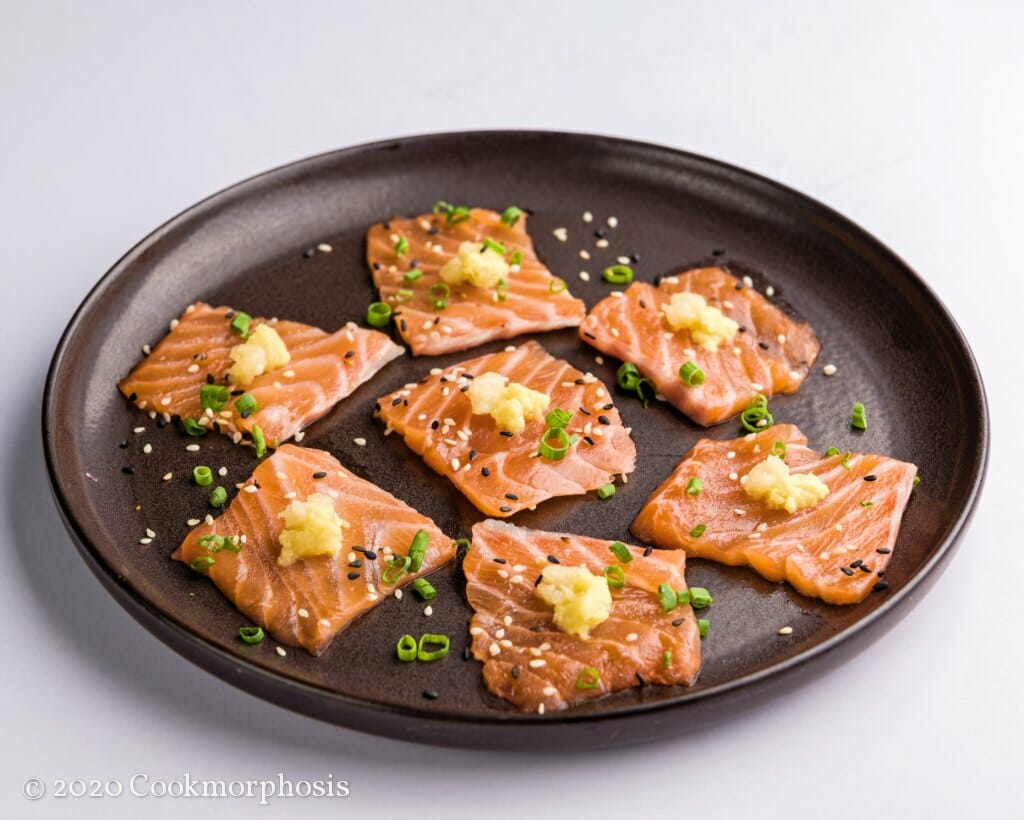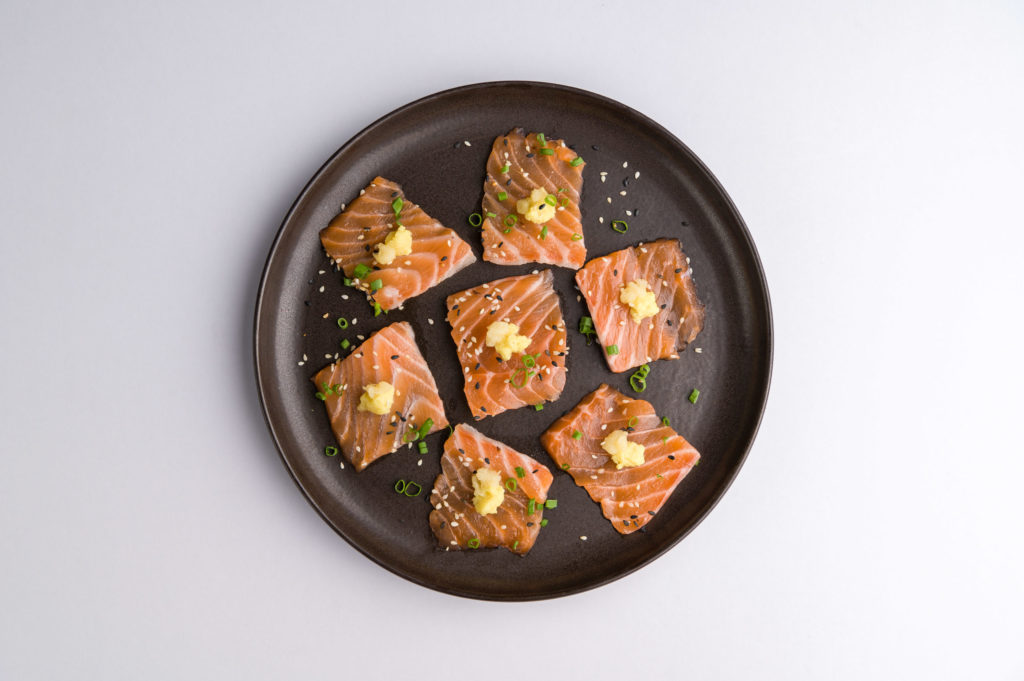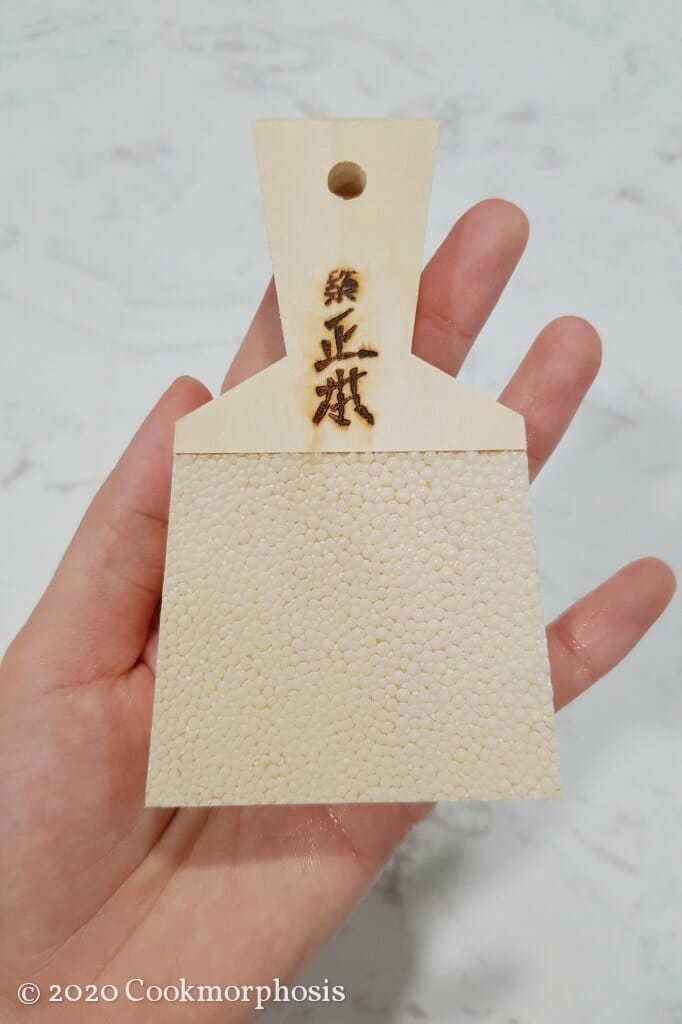This new way of eating salmon sashimi does not require wasabi like you used to have. The combination of grated ginger and garlic brings the best flavor profile to the dish.

The old school way that we used to eat salmon sashimi is dipping that raw slice of fish into soy sauce infused with wasabi. But when many contemporary restaurants start to evolving the way of eating sashimi, this new style gains attention over time.
If you happen to dislike eating raw fish due to its smell, you are in the right place. In this recipe, the raw fish is semi-marinated in an acidic mixture to accentuate its freshness but also helps toning down its smell.
This recipe can be made at home to show off your fish slicing skills to your friends and family. Moreover, it can also be a perfect menu item if you are looking for a light, cold appetizer for your restaurant.
Lets dive into this recipe with more details, shall we?
How to pick the right fish for your sashimi?
Fish are highly perishable so it is important that you know and understand fish's freshness.
The first thing that usually can distinguish one good piece of fish from another is the color. If you are a novice sushi eater or a skilled chef, you probably know that already.
Salmon that has a deep orange color is definitely tastes better than the pale and light orange one.
Then comes the smell. Every fish is smelly but fresh fish should have a slight sea smell and no odor at all.
The eyes of the fish (if you are picking whole fish) should be clear and full. Sunken and cloudy eyes mean that the fish is drying out and not fresh.
About the appearance, fresh fish should look glistening and not have bruises or dark spots on its flesh. The gills should be intact and bright red. The fins and scales should be moist.
Damaged gills, fins or scales may be a sign of mishandling and that the fish is old.

Pick the right knife
Slicing fish skills can be learnt and built up over time. And you need a sharp and a good knife to begin with.
A dull knife will only do you no good and probably will have negative impact on your slicing skills over time.
There are two types of knives that can perfectly handle this slicing of sashimi. The slicer (Sujihiki) and the multi purpose Chef's knife (Gyuto).
You don't need to be a professional sushi Chef to own a perfect knife. Invest in a good knife will make your cooking life, both professional and self-taught, easier.
I can go on and on about how to pick a right knife and what to look for in a good knife. Well, I'm a knife-addict in case you haven't noticed.
But that is for another post. So to sum up, get a good Japanese style knife, a slicer or a Chef's knife. Or even better both.
Slicing fish
There are two types of slicing fish you can apply for this recipe.
Hirazukuri, a straight down cut to form small slabs of a fish.
Or usuzukuri, a thin slice cut of fish on an angle.
Just pick one that suitable to your taste and texture reference.
Essential equipment and ingredients used in this salmon sashimi recipe
In order to achieve the smoothness texture of grated ginger and garlic, I use a Japanese shar skin grater.
The abrasive surface of shark skin grater, which is widely used in sushi restaurants and my other recipe, helps to break down the dense texture of ginger and garlic. Also it allows them to release full flavor potential.
As for ingredients, besides salmon, there is no exotic or luxury ones called for in this recipe. Just very simple and easy to find ingredients which you probably have in your pantry already: soy sauce, ginger, garlic, sesame seed, chives and mandarin.


Ginger Garlic Salmon Sashimi
Equipment
- Japanese grater
Ingredients
- salmon fillet as needed
- ginger grated, as needed
- garlic grated, as needed
- chives chopped, as needed
- sesame seeds roasted, as needed
Citrus soy
- 2 tbsp mandarin juice or orange juice
- 2 tbsp soy sauce kikkoman
- 1 tbsp lime juice
Mixed oil
- 1 tbsp extra virgin olive oil
- 1 tbsp sesame oil
Instructions
- In a small mixing bowl, mix together citrus soy ingredients. Strain the mixture 2-3 times t get rid of mandarin and lime pulp. Soy mixture should be pulp free.
- In another small mixing bowl, mix EVO and sesame oil together. Stir well to combine two oils.
- On a cold plate, layout salmon sashimi slices, topped with grated ginger & garlic, spoon a tsp of citrus soy over sashimi, and a small drop of mixed oil on each slice of fish. Garnish with chopped chives and roasted sesame.
- When eating sashimi, make sure you have everything in one bite to achieve the full flavor profile. Enjoy!

Leave a Reply